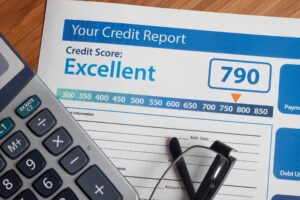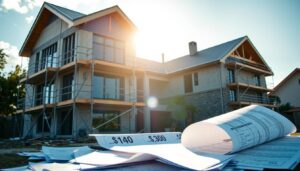**Title: Understanding Drive-By Appraisals: Accuracy, Process, and When to Use Them**
**What Is a Drive-By Appraisal and How Accurate Is It?**
When most people hear the word appraisal, they likely envision a traditional scenario where a stranger visits their home or the home they want to buy and walks around, taking notes and carefully evaluating every inch of the property. However, a drive-by appraisal doesnt work this way.
Drive-by house appraisals grew in popularity during the COVID-19 pandemic and continue to be more common than in the pre-COVID days. According to the 2023 National Association of REALTORS® Research Group Appraisal Survey, appraisers are becoming increasingly comfortable with this appraisal method and more appraisers are using it at least on occasion.
A drive-by appraisal can provide a decent estimate of a propertys value when a traditional appraisal isnt necessary or possible.
**What Is a Drive-By Appraisal?**
A drive-by appraisal, also sometimes referred to as a summary appraisal, is an alternative type of home appraisal during which an appraiser examines only the propertys exterior. To determine the homes fair market value, the appraiser will consider the results of the appraisal and all available real estate records and data.
Because drive-by appraisers dont enter homes, they rely heavily on data such as market conditions, comps, and public records to determine a homes current market value.
**How Drive-By Appraisals Work**
The term drive-by may imply minimal effort, but this isnt the case. Professional appraisers completing a drive-by appraisal must follow certain guidelines and use all the information at their disposal to create an appraisal report as accurate and as similar to a traditional appraisal as possible.
Drive-by house appraisals involve several layers worth discussing:
1. **The Homes Exterior Is Inspected**
– With a drive-by appraisal, a professional appraiser visits a home to take detailed notes and photograph a propertys exterior condition and features.
2. **Comps Are Evaluated**
– Drive-by appraisers analyze the sales data of comps, which are recently sold homes in the neighborhood or area nearby with features like the property being appraised. In some cases, appraisers may even personally visit comparable properties to evaluate them in a similar drive-by fashion.
3. **The Neighborhood Is Assessed**
– Appraisers also evaluate the neighborhoods characteristics, such as its environmental conditions. For example, living in a flood zone or near a noisy highway may negatively affect property values.
4. **Research Is Conducted**
– The exterior inspection of a home is only one part of a drive-by appraisal. Appraisers must conduct adequate research and learn enough about a home to provide a reasonable appraisal value. They may use multiple listing service (MLS) listings, tax records, public records, and homeowner-provided information to learn as much as possible about the features and conditions inside the home.
**When Is a Drive-By Appraisal a Good Idea?**
Lenders use appraisals to determine the market value of a home so they wont lend more than a property is worth and they can minimize the risk of a borrower defaulting on their home loan.
Because drive-by appraisals arent as precise as full appraisals, some mortgage lenders wont allow for a drive-by appraisal on a home purchase or refinance transaction unless extenuating circumstances come into play.
For instance, during the pandemic, mortgage entities such as Fannie Mae, Freddie Mac, and the Federal Housing Administration (FHA) amended their rules to allow drive-by appraisals for home purchases and refinances because other types of appraisals were prohibited.
So, when might a drive-by house appraisal be the right choice? Here are a few scenarios:
– **The home is at risk of foreclosure.** A mortgage lender may order a drive-by appraisal on a home in danger of being foreclosed on.
– **The homes interior needs work.** Drive-by appraisals can benefit sellers who worry that issues with the inside of their home might lower their desired valuation from an appraiser.
– **The homeowner wants to refinance or get a HELOC or home equity loan.** Homeowners with significant home equity present a lower borrowing risk for lenders, making a drive-by appraisal a viable option if the homeowner wants to refinance or take out a home equity line of credit (HELOC) or home equity loan.
**Pros and Cons of Drive-By Appraisals**
Drive-by house appraisals come with both advantages and disadvantages.
**Drive-By Appraisal Pros**
– **Cost:** Drive-by appraisals are cheaper than traditional appraisals, which often cost somewhere in the $300 $400 range.
– **Convenience:** Because an appraiser doesnt enter the home, drive-by appraisals are generally more convenient for homeowners since homeowners dont need to worry about preparing their house or planning their schedule around an appraisers visit.
**Drive-By Appraisal Cons**
– **Less accuracy:** No matter how much research an appraiser does, its hard to fully compensate for the lack of an interior inspection when appraising a home. So, drive-by appraisals are generally considered less accurate than full appraisals.
– **A greater chance of missing interior issues:** Problems such as damage, disrepair, or mold can be easy to miss when an appraisers research is limited to public records and information a homeowner discloses.
**Alternative Appraisal Options**
Traditional and drive-by appraisals arent the only appraisal types. You may have additional options for getting a home appraised.
**Desktop Appraisal**
With a desktop appraisal, neither the interior nor the exterior of a property is physically inspected. Like a drive-by appraisal, this type of appraisal relies heavily on real estate records, MLS information, photos, and comps. Also like a drive-by appraisal, the appraiser uses public records and market analysis to estimate a homes value. O1ne Mortgage Inc. doesnt offer desktop appraisals at this time.
**Hybrid Appraisal**
A hybrid appraisal, also known as a bifurcated appraisal, splits the appraisal process into two parts completed by different parties. To complete a hybrid appraisal, a licensed real estate appraiser must analyze data such as public records, MLS information, and comps to support their property valuation. But, instead of personally visiting the property, the appraiser recruits a third party who may likewise be a professional appraiser to physically inspect the property. The appraiser uses the third partys data and the results of their market analysis to create an appraisal report.
**The Bottom Line**
Theres no need to panic if you hear the words drive-by appraisal from your lender. First, drive-by appraisals are used only under certain circumstances. And, when they are used, appraisers work hard to ensure theyve collected enough information to provide a reliable assessment of a homes value.
If youre thinking of buying a home or refinancing your mortgage, you can get started online today with O1ne Mortgage Inc. Visit [O1ne Mortgage Inc.](https://o1nemortgage.com) to request a mortgage quote, apply for a loan, or speak with a mortgage expert. You can also call us at 888-372-8820.
**Keywords:** drive-by appraisal, home appraisal, mortgage lender, real estate appraisal, home value, O1ne Mortgage Inc., refinance, HELOC, home equity loan, property value, real estate market, appraisal process, mortgage quote.







